If the walls of Doner Auditorium could talk, what would they say?
Surely they would speak about actors who took that old stage admonition to “break a leg (or ankle)†a little too seriously. Or why a swooping bat was a good thing, even if it wasn’t a Halloween show. They also would probably explain why the fire escape is an integral part of each theatrical production.
With a little prodding, those 106-year-old walls might even explain the mystery of George, how he got his name and if he’s a friendly spirit.
Doner Auditorium, built in 1912 as part of the Administration Building, served as the center point of campus for many years. It was designed as a place where the entire student body could assemble. It preceded The Barn or a student union. When the Jackrabbits played in the Division II national basketball championship in 1963, the radio broadcast of the last-second win was played to students and faculty filling what was then called College Auditorium.
(Doner didn’t gain its current name until 1978 following the death of David B. Doner, who served as registrar/director of admissions from 1922 until his retirement in 1964.)
For many years, when Lincoln Hall was the library, musical performances were held at Doner.
For nearly a half-century, it primarily has been home to State University Theatre and Prairie Repertory Theatre. With construction of a $50 million addition to the Performing Arts Center, Doner’s days as a theater will end. Prairie Rep bid goodbye to Doner with this summer’s shows, which wrapped up with “Tuesdays with Morrie†Aug. 23-24.
State University Theatre will perform its two fall semester shows at Doner and then move to the PAC, where a studio theater already is
in place.
Corey Shelsta, designer and technical director for the theater program since 2000, said, “We’re so excited about being able to do so many more things (in the new facility). There will be more learning opportunities for our students. I’m so excited about that. That often overshadows the sentimental thoughts of leaving Doner.â€
But there are plenty of sentimental thoughts despite the facility having inadequate backstage accommodations and pieced-together technical features.
Doner: Home away from home
“It was home for many, many years,†said Ray Peterson, who retired in 2011 after a 40-year career at SDSU, including the last nine years as director of theater. He preceded Shelsta as the department’s technical director.
“I spent many a morning watching the sun come up on the backstage exit (fire escape). Back then there were no student aides. All help were volunteers. Then we would go to Country Kitchen for breakfast,†said Peterson, who remembers performing on the Doner stage as an Oldham High School student for musical contests in the early 1960s.
For many years, theater at SDSU was a production of Peterson, Clare Denton and James L. Johnson, who served on the theater faculty from 1973 to 2003 and was director of theater from 1976 to 2003.
Johnson knew Peterson from Dakota State, where Johnson was on faculty and Peterson was a student. “Ray was the major vocalist at our wedding 53 years ago,†recalls Johnson.
Spawning new generations of directors
“Raymond and I combined our talents for 70 some major productions over in Doner. We spent weekends there. We would come back from vacations early. You figure 80 to 100 hours of rehearsals per production,†Johnson said. That’s like spending every single minute together from Jan. 1 to about Sept. 19.
It was a partnership that brought Broadway shows to Brookings—“Midsummer Night’s Dream,†“The Music Man†and “The King and I†being a few examples.
They also produced the current theatrical leadership at State. J.D. Ackman, director of theater, is a 1978 graduate. Shelsta graduated in 1993. Melissa Hauschild-Mork, choreographer for State University Theater and Prairie Rep, is a 1987 graduate.
Ackman said, “The first time I walked into Doner Auditorium would have been the fall of 1975. I was there to audition for a musical production of ‘1776.’†That was his sophomore year. He was a newcomer to theater. In his senior year at Brookings High School, veteran teacher/director Bette Gerberding got the all-sport athlete to sing in the chorus of “My Fair Lady.â€
“It appealed to my artistic and technical side. I wasn’t a very good actor and knew I could be better,†Ackman said.
So he felt an inner challenge to improve, just not right away. He spent his freshman year as a physics major and ran track. He graduated as a communications major with a theater option and was a member of Alpha Psi Omega, the theater fraternity.
“The memories are almost too many to count. I learned a lot from people like Clare Denton, Dr. James L. Johnson, Nancy Wheeler and Ray Peterson. Then I worked with them as colleagues. I enjoyed seeing a student figure it out onstage. And almost inevitably they figured it out; they knew what they were supposed to be doing onstage,†Ackman said.
Shelsta’s story has similarities. He was in the last class to graduate from Clear Lake High School in 1989. He arrived at State as an electrical engineering major and took courses in physics, calculus and other engineering prerequisites as well as a course in stage craft. It would meet the requirement for fine arts credit, a friend suggested to him.
Four years later, Shelsta had a degree in theater and a career plan in place. He earned a Master of Fine Arts and landed a job in Memphis. With the arrival of his first child and the departure of a former instructor (Desi Roybal), he returned to Doner.
‘Don’t build things like that anymore’
“I have done nearly 150 shows in this space. I’ve enjoyed every one I’ve done in here,†Shelsta said. Since his theatrical role has been with the tech crew, “I’ve been in most of these nooks and crannies of this old building at one time or another. They don’t build things like that anymore. It was built to last. The big red iron trusses above us were hot riveted together.â€
At one point Doner could seat 913, but that was when the balcony could be used for seating. Some earlier building modifications and the balcony closure in 2011 dropped seating capacity to 450.
While some thought it was closed for stability issues, the SDSU Department of Facilities and Services explained that because of other work going on in the Administration Building, the Americans with Disabilities Act required the auditorium to also be made ADA accessible. The cost of doing that for the balcony was deemed too steep.
Break a leg
The twisting steps leading from the first-floor costume rooms to the second-floor stage are mountain goat-steep with a spiral and walls for hand rails.
Johnson recalls a June 1997 performance of “Steel Magnolias†in which Kristi Westbrock-Johnson, who played a wealthy curmudgeon, scampered down the staircase at intermission and missed a step. She suffered a severe ankle sprain. Johnson needed to take her to the hospital. The next two days she performed in a boot cast.
But what about the rest of that night’s show? Well, “the show must go on†is not a throwaway line—it’s every production’s mantra.
Natasha Nuytten, the assistant director, was a thin, dark-skinned woman originally from Sioux Falls. Visually, she couldn’t have looked more different from the actress who played M’Lynn in the first act. But Nuytten grabbed the script and went onstage for Act Two.
Westbrock-Johnson isn’t the only one to sprain an ankle on the stairs, but she is the only one director Johnson recalls doing it during a performance.
Happy ending to lunar mishap
Marie Tesch ’74 was cast in the lead role of Mame in the musical production of the same name in fall 1978. She was teaching four sections of speech fundamentals as a grad assistant and working on her thesis while continuing her love for theater.
She recalls a harrowing rehearsal that 40 years hasn’t dimmed.
“One of the songs required that Mame fly back and forth across the stage while riding a giant moon and singing a duet with Vera, who was down below. I wasn’t particularly afraid of heights, but my voice did quaver as the crew swung me back and forth.
“Two nights before opening, the fellas decided to really swing Mame and give me a little scare. Well, the moon was several pieces of thick plywood glued together. They lost their timing (on the balancing ropes that created the flight). The main seam of the moon gave way and it broke right at the point I was sitting on. The points of the moon flew up on both sides of me and I tumbled to the floor—probably a 6- to 8-foot drop.
“The near tragedy brought the cast together. It was very quiet as the rest of the cast gazed down on my limp body sprawled across the stage. They all realized that it would be hard to open in two nights without the leading lady. Fortunately, I was able to stand up and show them nothing was broken. We carried on. That’s what you do in theater.
“‘The show must go on’ is not just an expression.â€
‘Nothing was simple’
Typically, the challenges to putting on a show at Doner were physical rather than emotional.
“Nothing was simple,†Peterson said. “Physically having to lift everything (set piece) over the fire escape to get onto the stage was, and still is, a challenge. Midwinter, rain or shine.â€
Alex Garcia, a senior and president of Alpha Psi Omega, said for this summer’s production of “The Fox on the Fairway,†a bar with plywood cupboards needed to be hoisted up the fire escape.
“It’s always safe, but there is a little bit of ‘Oh my God, this isn’t fun.’ We took the guard rails off of the fire escape and had four or five people below lifting it up to four or five people up there to grab it.â€
Shelsta recalls when PRT produced “Grease,†which required the mounting of the front end of a 1952 car on a platform and getting it up the fire escape. Even with the engine removed, it was a job better suited for football linemen, he said.
“Physical Plant used to help with a fork lift, but they no longer do that because of liability issues,†Shelsta said. “You learn to build things smaller and put them together. Rather than move a monstrous thing up the stairs, it’s easier to build smaller and put together.â€
Bats in the rafters, George in the still of night
Part of having a theater in a century-old building is that one of nature’s smallest creatures find ways to get inside.
Shelsta said, “Every once in a while you get a bat in here. The student tradition has become if the bat flew in the times before a show, it’s going to be a good show. If you don’t see a bat, it’s an omen that it’s not going to be a good show.â€
And what old theater isn’t haunted by a mysterious spirit?
Doner lays claim to George, or is it the other way around? His “appearances†predate Peterson’s arrival in 1971. No one interviewed for this story knows when his legend began or from where his name originates. Or if he truly exists.
Director Ackman notes, “I’ve never seen or heard George. It’s fun for the kids. I wouldn’t say George does not exist.â€
Peterson said, back in the 1970s “We had to physically move one of the costume shops from upper level to lower level. Students refused to work there. They would hear these strange noises. I wasn’t all that concerned about George, but there were times you couldn’t help but wonder. It was spooky, particularly when you were working alone at night.â€
Shelsta said, “You come in here as a freshman and they start telling you ghost stories. George is a legend that pretty much starts from the time you set foot in this place.
“With the exception of Ray Peterson, I have probably spent the most time here alone in the dark working on lighting. You hear random creaks and noises. I know what a radiator sounds like. You walk onstage and see a door opening. It’s random things that kind of freak you out. I’ve been in places where you just get that feeling somebody is with you and the hair on the neck will stand up.
“I’ll get that sense that someone is behind me. But I’ll turn and there is nothing there. I’ve never actually seen George, but I’ve felt that several times.Â
“I hope if there is a George, that he is happy with what we’ve done. I never felt he was malevolent. I think George is a protective ghost. I think he likes us and he’s been happy with what we’ve done here.â€
Dave Graves

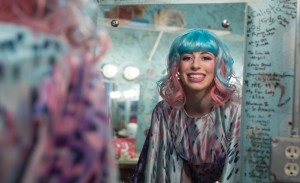
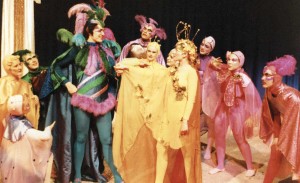
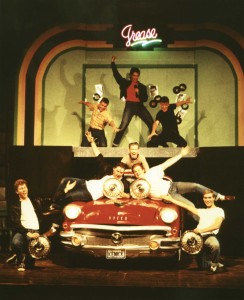
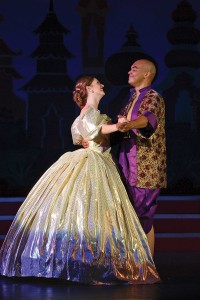
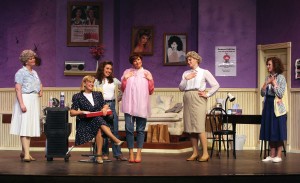
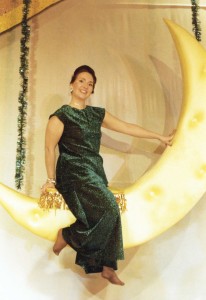
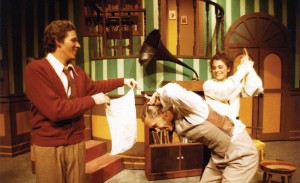






Love the article. Great memories of watching my three children perform there!